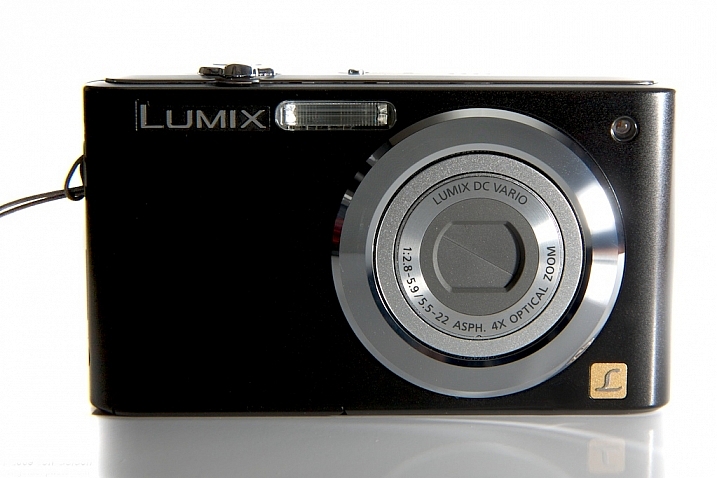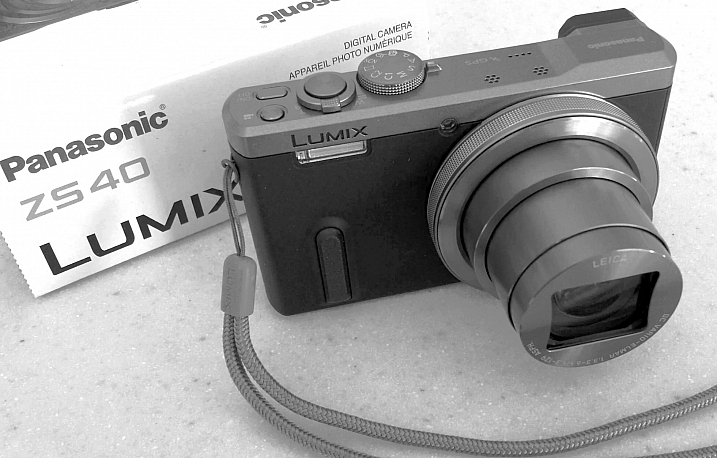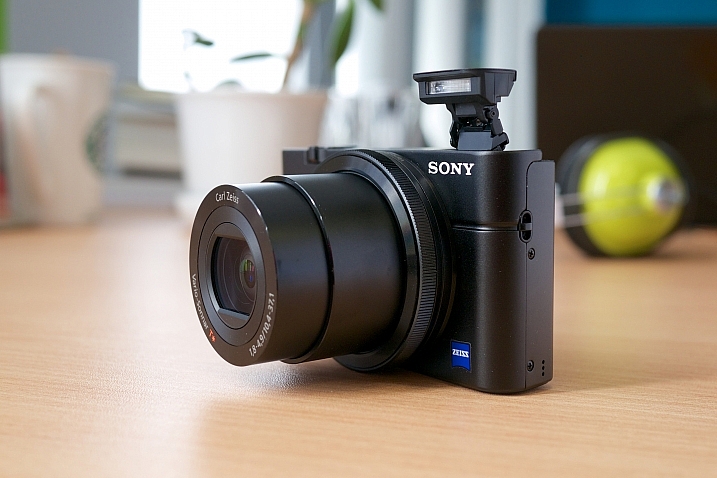There is no shortage of digital cameras these days. But for any beginner in photography, it can be a daunting prospect trying to settle on the right one for them. Understanding how the different types of cameras differ could give you a good indication of which one might be right for you. Let’s take a look at a few options:
Standard Compact
Small, light and fairly cheap, standard compact cameras (also known as Point and Shoots) are usually the basic entry model into the digital photography lineup. They are normally fully automatic, but some do offer some manual exposure options. They would usually have a zoom lens (4-10x) which folds into the camera, a built-in flash, and an LCD screen on the back (no eye viewfinder). Prices usually start from around $85, and can go up to over $400 for the more high-end versions. These might include additional features such as HD video recording, image stabilization, and sometimes Wi-Fi connectivity, which allows for instant upload of photos onto to social network sites.
- Pros: Inexpensive, light, and a good basic option if you want a camera for personal use.
- Cons: Limited manual exposure options. Not good enough quality (they have very small sensors) of finished files for professional use. No interchangeable lenses.
Zoom Compact
Zoom compacts are pretty similar to standard compact camera, but usually benefit from a more powerful zoom lens (which can be as high as 30x). These cameras tend to be a little more robust and are generally larger in size than standard compacts. Most would have some manual exposure options, as well as automatic, and usually offer HD video recording. They tend to start at a slightly higher price of around $150 with luxury models over $500. Some will offer additional features, such as GPS for automatic geotagging, which is great for when you are travelling.
- Pros: Still fairly inexpensive, pretty robust with a powerful zoom, a good option for personal use.
- Cons: Photo quality not good enough for making large prints or for professional use. No interchangeable lenses.
Adventure Cameras
These types of cameras tend to be similar to compacts, but are designed to withstand the elements. They’re usually waterproof, shock proof, and some recent models are even freeze proof. They usually offer some limited manual exposure options, and a zoom closer to the standard compact (rather than a zoom compact) which is behind toughened glass. With a starting price of around $120, they are a good option if you are after a basic camera that can withstand some extreme conditions. More advanced models will be upwards of $500.
- Pros: Tough build makes them ideal for use in extreme conditions for personal use.
- Cons: Limited zoom and exposure options, coupled with smaller sensor and photo quality not being good enough to make large prints or for professional use. No interchangeable lenses.
Advanced Compact
These cameras are designed for more experienced photographers and those who require more versatility, quality, and creative features. Options such as manual exposure mode and manual focusing features, optical viewfinders, and external flash connections, make these cameras a good option for photographers who want more control over their photos. But these features mean they are usually considerably more expensive than other types of compacts cameras. Prices can range from $400, to in excess of $700 for cameras with smaller sensors, and $700 to over $1000 for those with larger sensors.
- Pros: Small, compact and lightweight and still relatively inexpensive.
- Cons: Limited features for more advanced photographers. No interchangeable lenses.
Super-zoom
Super-zoom cameras have been falling out of favor in recent years. These cameras used to be the stepping stone between compact cameras and DSLRs (which is why they are called bridge cameras), but with the advances in compact cameras and CSCs (Compact system cameras) more and more people are now foregoing super-zooms. Usually fairly large with an SLR type body, which means hand-grips and an electronic viewfinder, these cameras often benefit from powerful zoom lenses, and image stabilization. Some will have HD video recording and a good set of manual exposure options, and vary from around $250 to $700 or more for advanced models.
- Pros: A sturdier body than compact cameras and good set of manual exposure features.
- Cons: Neither here nor there. Not as advanced as DSLRs and not as convenient as compact cameras. No interchangeable lenses.
Smartphone Cameras
The explosion of smart phones is arguably the biggest thing to happen to photography since digital technology. The convenience and readiness of smart phones mean that not only is there greater competition than ever, but also better opportunities for capturing those fleeting moments. Some smart phones are now capable of capturing photos at 16 megapixels, and offer a great low-light capability. Features and prices vary hugely from model to model and manufacturers, so it pays to do some research.
- Pros: Lightweight, compact and always by your side, ready to shoot.
- Cons: Image quality and size not good enough for high end or professional use. No interchangeable lenses.
Compact (Mirrorless) System Cameras

Compact system (mirrorless) cameras benefit from having interchangeable lenses, which means far greater control for photographers than standard compact cameras. They offer most of the features and capabilities of SLR cameras, but with the added benefit of being lightweight, smaller and generally less expensive. These cameras offer a great option for hobby photographers who want to extend the control over their photos, but do not want the hassle of having to carry heavy sets of full sizes lenses with them. In fact, more and more professional photographers are also investing in these cameras as an alternative option to their usual set of cameras.
- Pros: Good image quality with good features, lightweight, and often less expensive as a package than SLR cameras.
- Cons: Not the very best out there if you want the best quality photographs. (Editor’s note: this is the author’s opinion)
Read about some of mirrorless options we’ve reviewed and covered here:
- Sony A7RII Mirrorless Full Frame Camera Review
- The 19 Most Popular Compact System and Mirrorless Cameras with Our Readers
- Sony A6000 Mirrorless Camera Review and Example Images
- Fujifilm X-T1 Mirrorless Camera Review
- Thoughts on the Newly Released Olympus OM-D E-M5 Mark II
DSLR

Image courtesy of Canon
Since their introduction in the late 90s, these cameras have become the choice for serious amateur and professional photographers. DSLR cameras are designed on the same basis as their film predecessors, and they offer superb image quality, interchangeable lenses, and a host of creative controls. The majority of DLSRs use a sensor size called APS-C, but the very top end models will have a full-frame sensor which is the same size as a 35mm film. Prices start from around $400 for an entry-level APS-C model with a standard lens, right through to over $3,000, just for the camera body, for a full-frame model.
- Pros: The number one choice for professional photographers, offering superb image quality and creative features. Offer the availability to change lenses.
- Cons: Heavy, bulky and incredibly expensive.
Read more here:
- The 20 Most Popular DSLRs Among our Readers
- The 20 Most Popular DSLR Lenses Among our Readers
- 8 Factors to Look at Before You Choose a New DSLR or Mirrorless Camera
- Review: Comparison Canon 5D MarkIII vs the Canon 6D
- Camera Showdown: the Nikon D5500 and D3300, Canon 70D and Sony a6000 Compared
Medium Format Cameras
These are the Rolls Royce of the camera world. If a full-frame DSLR isn’t good enough for you, then the next step up is a medium format camera. These benefit from even bigger sensors than the full-frame DSLRs, which in turn means higher image resolution (60 megapixels), but they also come with a hefty price tag. For example the Hasselblad H5D-200cMS with a standard lens could cost in excess of $50,000!
- Pros: Amazing picture quality, nothing else will come close.
- Cons: Very expensive not to mention big, bulky and heavy.
Most new photographers often feel that they need to invest in the most expensive camera to capture great photos, however, don’t forget that the camera is just a tool. The reality is, that unless the other elements of the photo such as composition, lighting subject etc., are all in line, the photo will fail regardless of which camera you use.
There is plenty of choice out there, both in terms of features and price, for any photographer’s price range. So take your time, do your research, and choose something that is within your budget and suits your needs.
Now it’s your turn. Share your advice on cameras below.
The post Beginners Guide to Different Types of Digital Cameras by Kav Dadfar appeared first on Digital Photography School.
from Digital Photography School http://digital-photography-school.com/beginners-guide-different-types-digital-cameras/



No comments:
Post a Comment